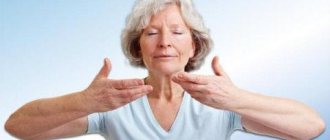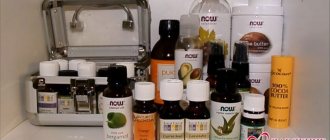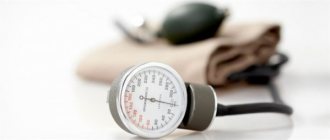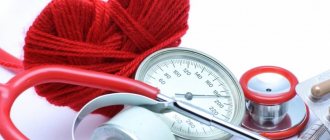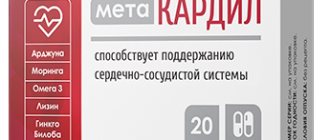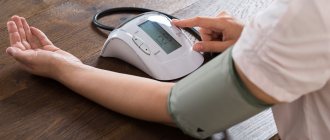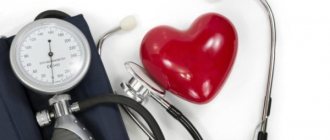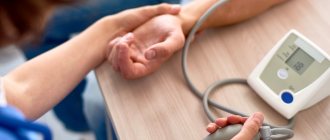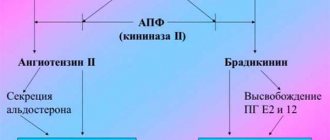Unfortunately, at present, many people are faced with the problem of high blood pressure, this is especially true for people over 45 years of age. Statistics show that 25% of all people on the planet experience high blood pressure from time to time. In elderly people over 65 years of age, this pathology is typical for 70% of people. Practice shows that few people suffering from this pathology know how to reduce blood pressure and what actions to take if there are no pills?
How to reduce blood pressure at home
First of all, you need to measure your blood pressure to make sure that the symptoms caused (weakness, nausea, drowsiness, dizziness) are associated with it. If the indicator is 130/85 or more, this is really high blood pressure, i.e. state of hypertension. To deal with it, it is recommended:
- Sit or lie down, calm down, close your eyes.
- Open the window, if it’s hot, turn on the air conditioning.
- Take a deep, smooth breath, counting to 5. Moreover, the stomach should participate in breathing - to make sure of this, you need to put your hand on it. Exhale and count to 5 again. Repeat several such cycles for 3-5 minutes.
- Next, when you feel better, you need to pour noticeably hot water into a basin (temperature 45 degrees) and put your feet in it for 5-10 minutes. It’s good to do a similar procedure for your hands. Thanks to this, the vessels of the extremities will expand and the pressure will drop by several units.
- Then you can hold your hands under a tap with cool (but not ice-cold) water.
- At the final stage, it is useful to massage the collar area - at the base of the neck, head, and shoulder area. After this, move on to the stomach and chest.
Ways to lower blood pressure
The main way to combat hypertension is treatment by a specialist. Taking into account possible complications, it is not recommended to give preference to self-medication. You can make an appointment with a cardiologist on our website.
Only a specialist can help solve your blood pressure problem. The doctor will select the necessary medications, the use of which will reduce blood pressure and maintain its values within the normal range. Also, the doctor will definitely prescribe medications that will help in case of an emergency.
The services of the Heratsi Medical Center are provided at the highest professional level at reasonable prices. With us you can consult an experienced and qualified cardiologist and solve your problem with high blood pressure.
6 useful tips
There is a wide variety of drugs on the modern market that can be used to reduce blood pressure without negative consequences for the body. But as practice shows, not all people have these medicines in their home medicine cabinets. If you find yourself in this situation, you can take into account the following recommendations; they will help lower your blood pressure at home.
- Deep breathing. If you have a question: “How to lower blood pressure without pills?”, then this method will help solve the problem. Restoring breathing is the first thing to do when your blood pressure rises. In terms of its effectiveness, this technique is the best option when there are no medications at hand. Deep breathing leads to increased blood circulation and stabilizes the emotional state. Blood reaches tissues easier and faster, which reduces pressure;
- Cold procedures. You can alleviate the condition of high blood pressure with the help of cool water, but it should not be ice-cold. The procedure allows you to reduce the heart rate. Stabilizing the functioning of the myocardium has a positive effect on normalizing blood pressure;
- Mint tea. Another way to lower blood pressure. Tea made from fresh mint helps to cope with hypertension more easily and normalize the situation, this is possible due to the properties of the plant, it dilates blood vessels, which lowers blood pressure;
- Foot bath with hot water. This method will also be useful for high blood pressure. Immersing your feet in hot water allows you to dilate the blood vessels in your feet. This in turn promotes blood flow to the periphery;
- Vinegar-based compresses. It is recommended to use apple cider vinegar. It contains special substances that have a positive effect on reducing blood pressure;
- Medicines. Medications help to cope with an attack of hypertension. Valerian copes well with this task. The active substance reduces stress levels and normalizes heart function.
If you have persistent signs of hypertension, do not delay your visit to a cardiologist. To assess the condition of your heart, you may be prescribed an ultrasound in Rostov-on-Don , with us this is done by a specialist with an academic degree using an expert-class device.
How to lower blood pressure without pills
Along with the described instructions, you can use other home remedies to reduce blood pressure:
- Warm, but not hot tea with mint leaves (brew for 10-15 minutes).
- External compress with apple cider vinegar - soak a cloth and apply it to the feet for the same time. This method works, but you need to use apple cider vinegar, not any other kind.
- Valerian or Corvalol – 15-30 drops per 3 tablespoons of water. Helps to calm down, thanks to which the indicator stabilizes.
- You can take a glass of warm water with 1 tablespoon of honey and half a teaspoon of freshly squeezed lemon juice. Moreover, instead of ordinary water, you can use mineral water.
- Diuretic tea, for example, based on lingonberries, rose hips, bearberry leaves, and linden flowers, will also help reduce blood pressure.
It is important to understand that the measures described help stabilize blood pressure only for a while. Therefore, in the long term, you should adjust your lifestyle, give up bad habits, follow dietary requirements and start losing weight. Thus, one lost kilogram of excess weight leads to a persistent decrease in blood pressure by 1 point.
First aid for high blood pressure
Category: Prevention.
Arterial hypertension and conditions associated with it, according to medical statistics, are becoming the most common cause of death and disability in modern society.
When a person’s blood pressure rises sharply, not only the load on the walls of arterial blood vessels of different sizes increases, but also the load on the heart muscle, which worsens the working conditions of the heart. That is why doctors insist that a patient suffering from hypertension (idiopathic hypertension) or symptomatic hypertension arising from diseases of the body, or who has a tendency to increase blood pressure due to neurocirculatory dystonia, must systematically receive prescribed medications to control blood pressure levels.
If there is a sharp increase in blood pressure, therapy should be directed to:
- decrease in blood pressure - it should be gradual and not exceed 25-30 mm Hg per hour. pillar;
- elimination of psychomotor agitation and manifestations of this condition from the nervous system;
- restoration of normal heart function, prevention of arrhythmia;
- relief of manifestations of hypertension affecting other organs and systems of the human body.
It is necessary to conduct a comprehensive examination of the human body, the purpose of which should be to identify the true cause of increased blood pressure - this is important for prescribing subsequent therapy.
In case of a hypertensive crisis, it is important to promptly identify the first symptoms of this complication, measure blood pressure (for accurate diagnosis) and immediately call an ambulance, whose specialists will carry out treatment and decide whether the patient needs to be hospitalized.
Symptoms of high blood pressure:
- headache – it can be diffuse or localized;
- nausea and vomiting that do not bring relief (characteristic of a sharp and sudden increase in blood pressure);
- the appearance of dizziness, unsteadiness of gait, inability to focus vision normally; • noise in ears; • the appearance of numbness in half the face, weakness of the limbs;
- pain in the heart area;
- frequent urination or urinary retention.
If you suspect the presence of the above symptoms, it is necessary to measure your blood pressure - it should be remembered that the readings of automatic and semi-automatic tonometers are affected by the measurement conditions.
If high blood pressure is detected, the patient must immediately call an ambulance, and before it arrives, try to calm the patient down. The patient should be seated or placed with a high headboard, and if possible, try to lower the lower end of the bed. Provide access to fresh and cool air (if possible).
To reduce blood pressure, you can use symptomatic therapy - hot foot baths for hands and feet, mustard plasters on the back of the head and the calf muscles.
If the patient has previously been prescribed antihypertensive drugs, then he can take the drug recommended by the doctor under the tongue - preference should be given to those drugs that are taken 2-3 times a day (they begin to act faster, but their effect is shorter).
If pain occurs in the heart area, it is advisable to take nitroglycerin under the tongue.
If psychomotor agitation occurs, you can recommend taking Corvalol, Valocordin, and motherwort tincture.
Medicines for the treatment of hypertensive crisis in the form of injections or drugs that have not previously been used in this patient should be prescribed by a doctor and taken under his supervision.
It is important to remember that preventive treatment of arterial hypertension, regardless of its cause, is always more effective than measures taken to lower blood pressure during a sudden and sharp rise - a hypertensive crisis.
Return of physical activity
Seriously ill patients with COVID-19 lie in bed for a long time. Inactivity weakens muscle tone and can cause neck and shoulder pain. Also, the lack of load reduces the mobility of the joints - the production of synovial fluid in them slows down. We talked about how this works in the article about joint problems. Some patients even find it difficult to maintain balance and walk. Therefore, doctors were puzzled by the issue of a speedy recovery.
“During almost a year of work with patients after coronavirus infection, we developed programs depending on the severity of the disease,” says Professor of the Department of Sports Medicine and Medical Rehabilitation of Sechenov University, Doctor of Medical Sciences. Elizaveta Koneva.
You can restore mobility with the help of physical therapy, which is prescribed in rehabilitation centers. There is no special exercise therapy program for post-Covid syndrome, but the nuances depend on the severity of the disease and complications.
“Motor rehabilitation after COVID-19 has no special features,” confirms neurologist and chiropractor at GMS Clinic Grigory Bashkirtsev. “For all people, the disease progresses individually, which means the approach to rehabilitation should also be as individual as possible, taking into account existing pathologies.”
For motor rehabilitation, for example, gymnastics is used to train balance and simple aerobic exercises in which a person uses the lungs and pulmonary muscles.
“Gymnastic exercises and hardware massage are mainly used,” says Koneva. During the recovery process, we take into account the patient’s complaints, monitor saturation and CT scans and, based on the data obtained, adjust the therapy.”
On the surface, all of these workouts may seem very easy to do, but after a long period of treatment, it can be difficult to even walk. Therefore, the entire process takes place under the supervision of rehabilitation specialists, who continuously monitor the patient and adjust the intensity of exercise therapy.
Respiratory rehabilitation
A common complication after coronavirus infection is viral pneumonia. Due to fibrosis, that is, scarring, of the lungs after it, some patients experience breathing problems: shortness of breath appears, it is harder to walk and climb stairs, there is not enough air. Even doing simple household chores becomes difficult.
You can understand how serious the complications are by several signs: the amount of sputum produced, exercise tolerance, as well as measuring the volume of exhaled air over time.
Respiratory rehabilitation measures should be individualized, especially for people with comorbidities and the elderly.
“Patients after pneumonia need to restore the act of breathing with the help of breathing exercises. Restore the mobility of the ribs, thoracic region and diaphragm, and correct the mobility of the neck,” explains Grigory Bashkirtsev.
In addition to aerobic exercises that require rhythmic breathing, breathing training is used during rehabilitation. They also help regulate breathing rhythm and mobilize respiratory muscles that are weakened by lack of exercise.
